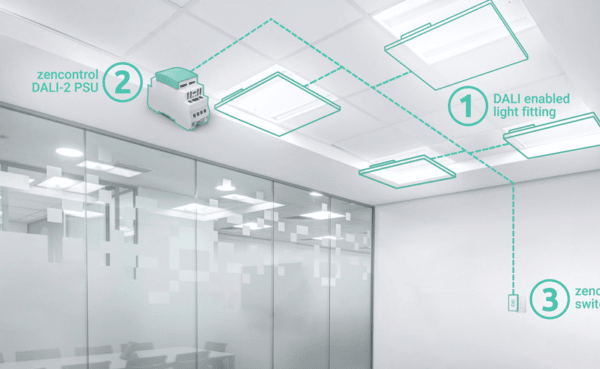So, you or your organisation have decided that it’s time to bring some building technologies into the workplace? Perhaps you’ve been ‘volunteered’ to undertake the research and find out what it will ‘cost’ to make your premises more intelligent?

While it may be easy to pick up the phone and start enquiring with different solution providers as to what they can provide, and the cost of such a solution, the information obtained from this somewhat time-consuming exercise will be minimal. Every solution provider will insist they are the best at what they do. They will tell you their solution is the best value for money. They will sell their services hard, but you will be unable to compare “apples with apples”. No two solutions will be alike, it will be almost impossible to realistically compare features and benefits, let alone what you are getting for the suggested cost.
Without doubt, the most important thing to nail down, before you consider what building technologies have to offer, is to take time to identify the organisation’s needs. It is only when you’ve researched what is required by all stakeholders that you can start to formulate a long-term strategy and allocate a budget to achieve those goals.
With the strategy in place and your objectives clear, it will then make it easier to identify the building technology partner that you wish to engage in order to deliver on the project.
Step 1
You may be researching on behalf of the building owner, or on behalf of the company occupying the space. If it is a public building, or the tenant is a government entity, they will most likely insist that any relevant NZ/AUS standards be adhered to. In this case, you can only consider a DALI lighting control system, as DALI is currently the sole lighting control standard adopted for New Zealand and Australia.
It is not uncommon for tenants to insist they want a smart building, but it becomes apparent they don’t know exactly what that means. Very confusing for the property owner who struggles to understand the communication around this topic and becomes totally confused as to what their tenants are actually looking for.
 An important first step, therefore, is to hold conversations with all key internal stakeholders to identify issues that they believe can be solved using smart building technologies. These conversations may need to include the property owners, the facility managers, and the tenants themselves.
An important first step, therefore, is to hold conversations with all key internal stakeholders to identify issues that they believe can be solved using smart building technologies. These conversations may need to include the property owners, the facility managers, and the tenants themselves.
Issues can vary tremendously. A tenant may be concerned about public perception when their lights are left burning after hours waiting for cleaning staff to arrive, and finally, turn them off. Corporate responsibility demands that the face the business presents to the world, is not one that is seen to be wasteful, using resources irresponsibly, or adds to problems such as light pollution.
Facilities management may want to track energy consumption and have an automated way to bill tenants for energy use. They would like to see automated reporting and easier maintenance of emergency lighting and other systems. With the huge responsibility of ‘compliance’ becoming an ever-increasing burden, automating as many routine administrative tasks in order to ensure compliance, is a facility manager’s dream!
Both facility managers and occupiers alike will appreciate the possibility of ‘remote maintenance’ of many of the building systems, reducing maintenance costs, and allowing quick response and remediation of any issues.
Building owners may want to improve the ‘green star rating’ of their building, to make it more desirable and attract high rents. For the same reasons, they will also be keen on improving occupant experience. Flexible workspaces, with the ability to change arrangements of interior spaces with very low cost, will also be of interest.
With today’s emphasis on acquiring and retaining quality staff, a healthy building supported by modern technology goes a long way towards attracting younger talent and keeping them long term.
Your organisation’s reasons for pursuing a building technology solution may include any or all of the above, or indeed other issues altogether. Regardless, once you’ve documented your conversations with the key stakeholders, you will be in a much better position to determine a strategy for achieving a smarter building.
Step 2
 Technology adoption, given the rapid pace of change, requires a growth mindset. It is likely that any adoption of technology will be part of a journey, rather than a destination in itself.
Technology adoption, given the rapid pace of change, requires a growth mindset. It is likely that any adoption of technology will be part of a journey, rather than a destination in itself.
You may look at a strategy that keeps a big picture in mind (albeit one that is constantly updating) but one that ranks the identified priorities and then creates numerous milestones en route, ones that will fit your budget, and your company’s appetite for change.
Drafting out those milestones, along with a timeframe for delivery will be very useful when it comes to looking at more specific solutions.
Step 3
Part of your strategy will be considering the need for involvement and engagement across the organisation required to deploy new technologies and considering how to address that need.
Have you achieved ‘buy in’ from your team?
Is the company prepared to invest in educating all the staff to ensure the smart building is utilised to its optimum potential?
Step 4
Identify any potential problems that may be stumbling blocks in the deploying of new technologies.
You need to have a good understanding of both internal requirements (as above) but also “non-negotiables.”
It may be that many solutions could be difficult to deploy due to the firm’s existing infrastructure, or other considerations.
There may be older building control systems in place, that could be costly to connect to. Existing data collection systems may be difficult to replicate. Limitations of older systems that must be connected/incorporated into the new system may limit the value of advanced analytical solutions.
There are bound to be a number of constraints that must all be reviewed. You will need to ensure they are well documented and can be communicated at the procurement process.
Step 5
 Determine your budget constraints. CAPEX versus OPEX or perhaps a mixture of both?
Determine your budget constraints. CAPEX versus OPEX or perhaps a mixture of both?
Growing popular are technologies where there is a lower capital initial expenditure, but where an ongoing subscription to a software licence is applied that aligns with the value delivered.
It is also possible to enter into leasing agreements that cover the cost of the technology solution by spreading it over a number of years.
Conversely, your organisation may prefer to spend upfront to avoid ongoing fees.
Be clear in advance, of how your company would prefer to arrange payment.
You will also need to budget time for the delivery of the project. How much time and how many resources can your business dedicate to a smart building deployment.
When you consider solutions, it will be important to remember that some offerings may be technically robust, but less intuitive. Others may be intuitive, but less analytical.
You will need to strike a balance in terms of your requirements to ensure staff are assisted in learning to use the system, and it provides real value with what it achieves.
Conclusion
The most successful companies we’ve worked with have invariably done their homework in advance by following these steps. They’ve understood the needs of their organisation, the stumbling blocks that need to be overcome, have determined a budget, and have succinctly communicated the objectives they were seeking to achieve.
If your organisation has been one of those ‘waiting on the side-lines’ when it comes to technology, it must be pointed out that the term ‘smart building’ is not reserved for that brand new 40 storey building on Auckland’s waterfront, or for the massive government building in central Wellington, currently being re-furbished throughout. Any building can become smarter.
Once you have identified your strategy, your final step is to engage a technology partner who can help you consider the options that meet your needs and objectives, and who will then work with you to develop a plan to fit your budget and timeline.
The content of this article is wholly based on our experience in working with many companies, some with, and most without a strategy in place. We believe following the steps above to clarify your objectives will get you your best return for your money and your time.
If you have any questions, we’d be happy to chat with you.


